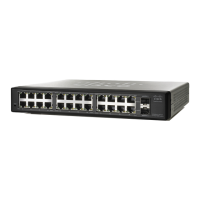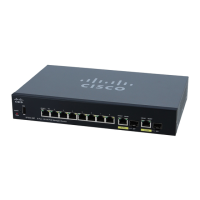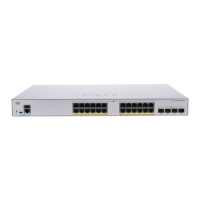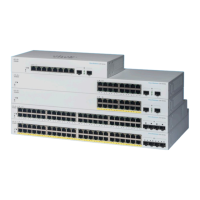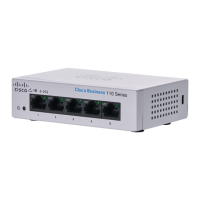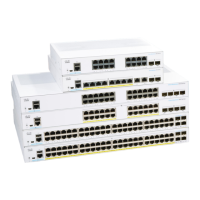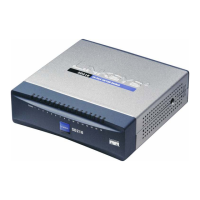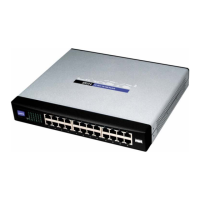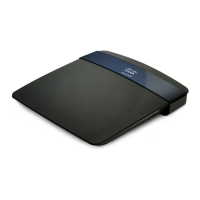Spanning Tree
Spanning Tree Interface Settings
Cisco Small Business 200 Series Smart Switch Administration Guide 201
15
- Disable—Disables Fast Link.
NOTE It is recommended to set the value to Auto so that the device sets the port to fast link mode
if a host is connected to it, or sets it as a regular STP port if connected to another device. This helps
avoid loops.
• BPDU Handling—Select how BPDU packets are managed when STP is disabled on the port or the
device. BPDUs are used to transmit spanning tree information.
- Use Global Settings—Select to use the settings defined in the STP Status and Global Settings
page.
- Filtering—Filters BPDU packets when Spanning Tree is disabled on an interface.
- Flooding—Floods BPDU packets when Spanning Tree is disabled on an interface.
• Path Cost—Set the port contribution to the root path cost or use the default cost generated by the
system.
• Priority—Set the priority value of the port. The priority value influences the port choice when a bridge
has two ports connected in a loop. The priority is a value from 0 to 240, set in increments of 16.
• Port State—Displays the current STP state of a port.
- Disabled—STP is currently disabled on the port. The port forwards traffic while learning MAC
addresses.
- Blocking—The port is currently blocked, and cannot forward traffic (with the exception of BPDU
data) or learn MAC addresses.
- Listening—The port is in Listening mode. The port cannot forward traffic, and cannot learn MAC
addresses.
- Learning—The port is in Learning mode. The port cannot forward traffic, but it can learn new MAC
addresses.
- Forwarding—The port is in Forwarding mode. The port can forward traffic and learn new MAC
addresses.
• Designated Bridge ID—Displays the bridge priority and the MAC address of the designated bridge.
• Designated Port ID—Displays the priority and interface of the selected port.
• Designated Cost—Displays the cost of the port participating in the STP topology. Ports with a lower
cost are less likely to be blocked if STP detects loops.
• Forward Transitions—Displays the number of times the port has changed from the Blocking state to
Forwarding state.
• Speed—Displays the speed of the port.
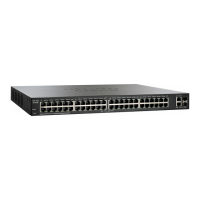
